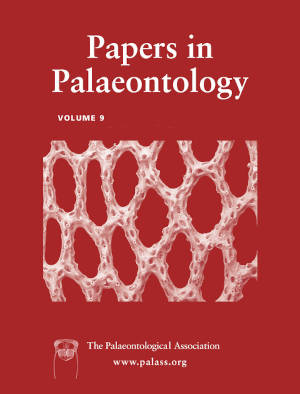Article: An expanded Smithian–Spathian (Lower Triassic) boundary from a reefal build-up record in Oman: implications for conodont taxonomy, high-resolution biochronology and the carbon isotope record
Publication: Papers in Palaeontology
Volume:
9
Part:
1
Publication Date:
2023
Article number:
e1481
Author(s):
Marc Leu, Hugo Bucher, Aymon Baud, Torsten Vennemann, Zoneibe Luz, Michael Hautmann, and Nicolas Goudemand
DOI:
10.1002/spp2.1481
Abstract
Abstract Some 2.7 myr after the Permian–Triassic boundary mass extinction, a stepwise extinction of the nekton (ammonoids and conodonts) ended at the Smithian–Spathian boundary (SSB) during an episode of climate cooling. SSB records from continental shelves are usually affected by an unconformity, suggesting a forced regression of glacio-eustatic origin. Here, we document a new 30-m-thick SSB section from Jebel Aweri (Batain Plain, Oman) that provides an exceptionally complete and expanded record preserved in an exotic block. Most of this SSB section consists of microbial boundstone build-ups with a framework of metazoan bioclasts that formed in shallow water on an offshore seamount. In Wadi Musjah (Hawasina nappes, Oman), another exotic block records the SSB in a deeper water setting represented by Hallstatt-type facies. These two sections provide a unique perspective on the early Spathian rapid re-diversification of conodonts. They led to a thorough revision of conodont taxonomy around the SSB and to the construction of the highest resolution biochronological scheme for this time interval in the Tethys. A total of five SSB sections from Oman representing both offshore seamounts and lower slope deposits were included in a high-resolution, quantitative unitary associations (UA) analysis. The resulting 8 conodont biozones are intercalibrated with ammonoid zones and with the carbonate carbon isotope record ultimately placing the SSB in the interval of separation between UAZ3 and UAZ4. Only the association of Novispathodus pingdingshanensis with Icriospathodus crassatus can be used to unambiguously characterize the base of the Spathian.
